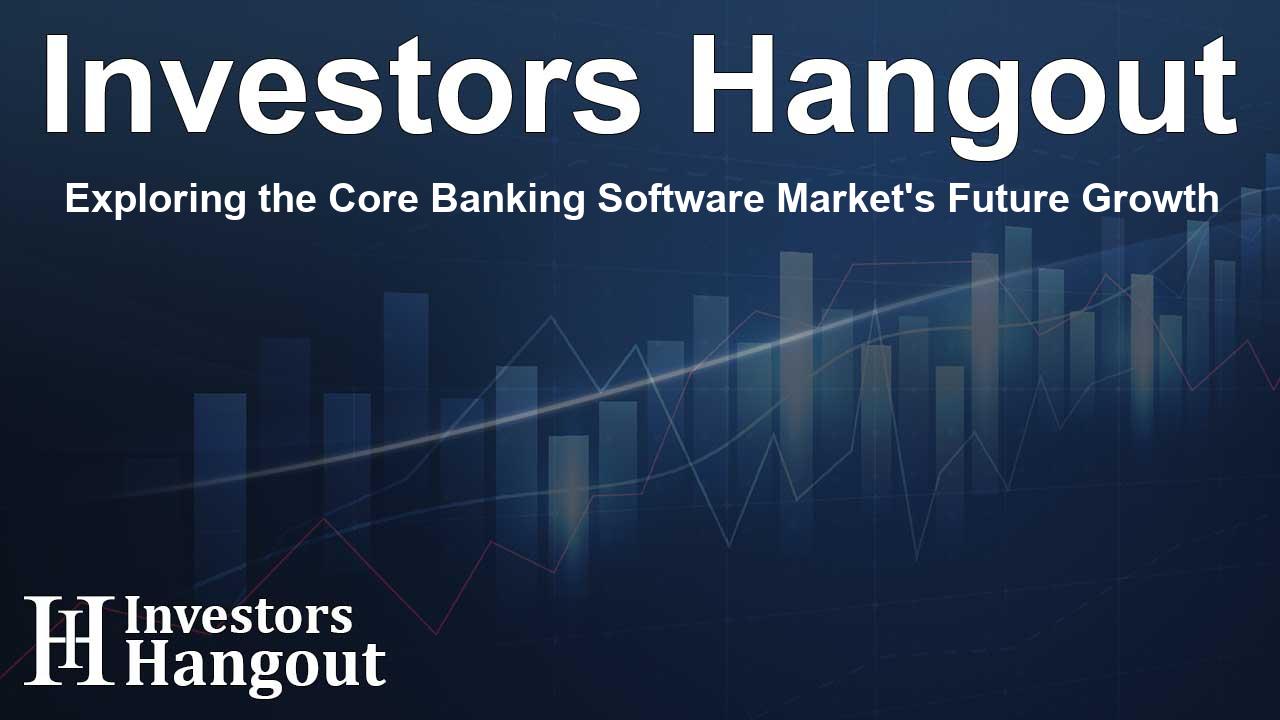Exploring the Core Banking Software Market's Future Growth

Core Banking Software Market Overview
The core banking software market is on a remarkable upward trajectory, anticipated to rise from USD 14.85 billion in 2024 to an impressive USD 38.21 billion by 2032. This substantial growth represents a compound annual growth rate (CAGR) of approximately 12.63% during the forecast period from 2025 to 2032. The driving forces behind this expansion include the rapid adoption of mobile banking solutions and the increasing demand for omnichannel banking platforms.
The Rise of Centralized Financial Systems
As financial institutions navigate the demands of modern banking, sophisticated core banking solutions are becoming more critical than ever. Financial institutions are looking for comprehensive platforms that integrate services such as wealth management, loans, savings, and payment processing under a unified system. This need for centralized financial systems is propelling demand for core banking software.
Importance of High-Performance Systems
Today’s banks must prioritize high-performing systems capable of efficient transaction processing. For instance, some systems can handle up to 1,900 transactions per second (TPS), significantly enhancing operational efficiency. Real-time transaction processing and seamless data integration across various channels, including branches, ATMs, mobile, and internet banking, are becoming essential features for a competitive edge.
Segment Analysis
When examining the market, understanding the core segments reveals critical insights into growth areas. As of 2024, the solution segment commanded a substantial market share of 70%, indicating strong demand for integrated platforms. Meanwhile, the service segment is evolving dynamically, predicted to grow at the fastest rate of 14.51% during the forecast period.
Deployment Trends: On-Premise vs. Cloud
Deployment strategies are also a pivotal aspect of the market. The on-premise segment dominated in 2024 with a 59% market share, owing to its established reputation for security and control. However, cloud deployment is projected to outpace it in growth, with a robust CAGR of 13.70% driven by its flexibility and cost-effectiveness.
Impact of End Users on Market Dynamics
Regarding end-user analysis, banks held a significant share of 63% in the core banking software market, with core platforms being vital for essential banking functions such as deposits, loans, and payments. Furthermore, financial institutions are anticipated to be the fastest-growing segment, propelled by the adoption of banking solutions among non-bank firms and microfinance organizations.
Banking Type: Dominance of Large Banks
The banking type segmentation reveals that large banks, defined as those with assets exceeding USD 30 billion, represented a dominant share of 38% in 2024. These institutions often have substantial technology budgets and are continuously modernizing their operations to enhance service delivery. In contrast, community banks, with assets below USD 5 billion, are projected to be the fastest growing segment, boasting a CAGR of 15.10% as they speed up their digital adoption strategies.
Market Trends by Region
Regionally, North America led the market with a 35% share in 2024, largely influenced by the presence of premier technology providers and advanced financial infrastructures. However, the Asia Pacific region is set to experience the highest growth rate, with a projected CAGR of 14.30% fueled by rapid digitalization efforts and supportive government initiatives to promote cashless economies.
Recent Innovations in Core Banking
Recent developments in the market illustrate the ongoing transformation within the banking landscape. For example, a leading banking institution recently transitioned to a modern cloud-first core banking system, enhancing operational efficiency and launching retail analytics for improved decision-making. Such strides highlight the shifting paradigm within financial technology.
Future Outlook
As we look ahead, the core banking software market presents significant opportunities for growth and innovation, particularly as financial institutions continue to adapt to technological advancements. The need for agility, efficiency, and enhanced customer experiences will drive future developments in this space.
Frequently Asked Questions
What is the projected growth of the core banking software market?
The core banking software market is expected to reach USD 38.21 billion by 2032, growing at a CAGR of 12.63%.
Which segment is leading in the core banking software market?
The solution segment is currently leading, holding a 70% market share, while the service segment is the fastest growing.
What deployment models are popular in the core banking sector?
On-premise deployment remains popular, but cloud deployment is expected to grow rapidly due to its scalability and cost efficiency.
How do banking types affect market dynamics?
Large banks dominate the market, while community banks are rapidly growing as they enhance their digital capabilities.
What are some recent developments in core banking innovations?
Recent innovations include the migration to cloud-based systems and new integrations that enhance interoperability and customer experience across platforms.
About The Author
Contact Dylan Bailey privately here. Or send an email with ATTN: Dylan Bailey as the subject to contact@investorshangout.com.
About Investors Hangout
Investors Hangout is a leading online stock forum for financial discussion and learning, offering a wide range of free tools and resources. It draws in traders of all levels, who exchange market knowledge, investigate trading tactics, and keep an eye on industry developments in real time. Featuring financial articles, stock message boards, quotes, charts, company profiles, and live news updates. Through cooperative learning and a wealth of informational resources, it helps users from novices creating their first portfolios to experts honing their techniques. Join Investors Hangout today: https://investorshangout.com/
The content of this article is based on factual, publicly available information and does not represent legal, financial, or investment advice. Investors Hangout does not offer financial advice, and the author is not a licensed financial advisor. Consult a qualified advisor before making any financial or investment decisions based on this article. This article should not be considered advice to purchase, sell, or hold any securities or other investments. If any of the material provided here is inaccurate, please contact us for corrections.
